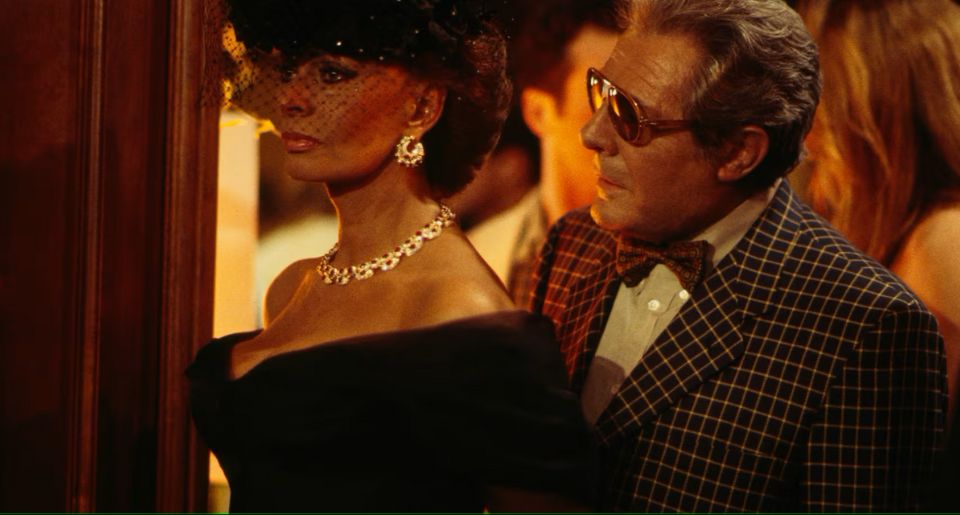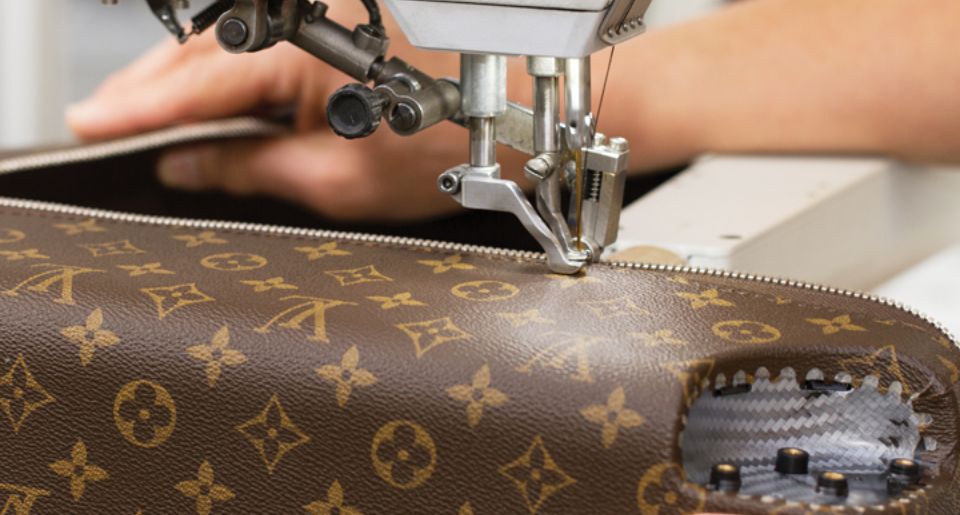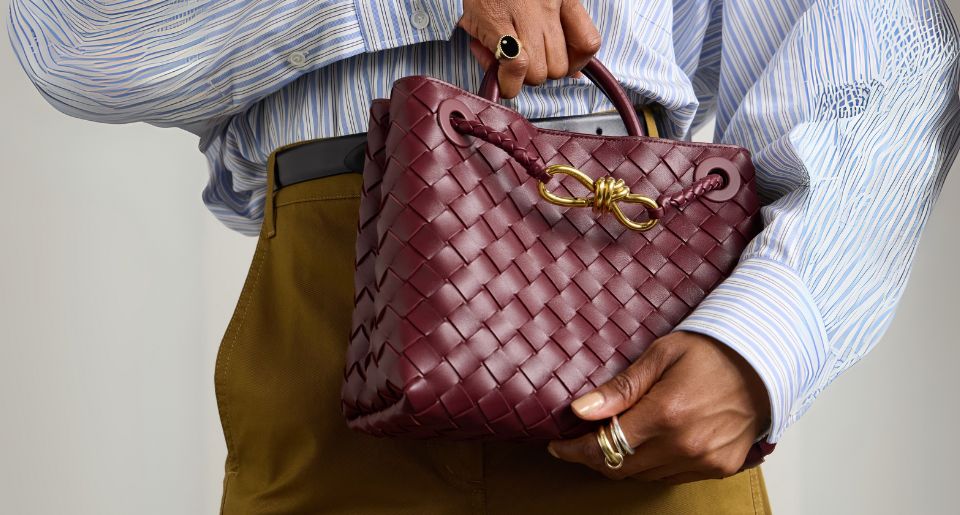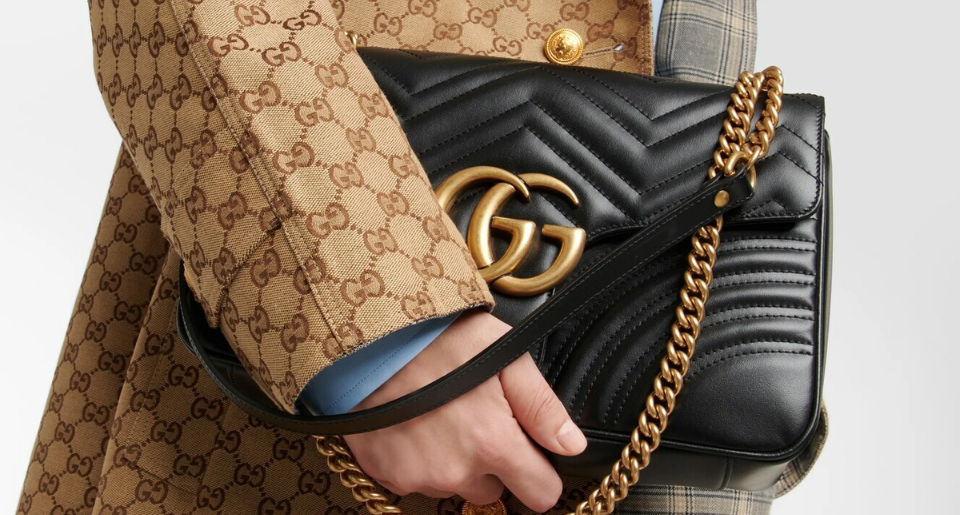Italian actors Sophia Loren and Marcello Mastroianni on the set of the 1994 film "Prêt-à-Porter" (Ready to Wear). Loren is adorned with a Bvlgari necklace and earrings crafted in gold, enhanced with rubies and diamonds. - (Image courtesy of Bvlgari)
Contents
- 1884s: From Greece to Roman Glamour
- 1920s: The High Jewelry Dawn
- 1930s: The Iconic BVLGARI Emerges
- 1940s: The Birth of the Iconic ‘Snake’
- 1950s: The Golden Age
- 1960s: Living La Dolce Vita
- 1970s: A Design Revolution
- 1980s: The Modular Jewelry Era
- 1990s: Jewelry, Fragrances, Leather Accessories, and More
- 2000s: A Leap into Hospitality
- 2010s: Bvlgari's Octagonal Marvel
- 2020s: Crafting Next-Gen Luxury
- A-Listers Choose Bvlgari—Tempted to Try?
- About The Writer
Breathtaking jewelry, meticulously crafted watches, fragrances that whisk you away to the heart of Italy, and elegantly handcrafted leather goods and accessories—what other feats of luxury can Bvlgari, the esteemed Italian luxury house established in 1884, not achieve?
As a symbol of refined Italian luxury, Bvlgari has been gracing some of the world's most extraordinary women and men for over a century, only growing in prestige and prominence with each passing year. Learning about Bvlgari's ascent to Roman glamour will indeed get you lost in history in the most enchanting way possible.
1884s: From Greece to Roman Glamour
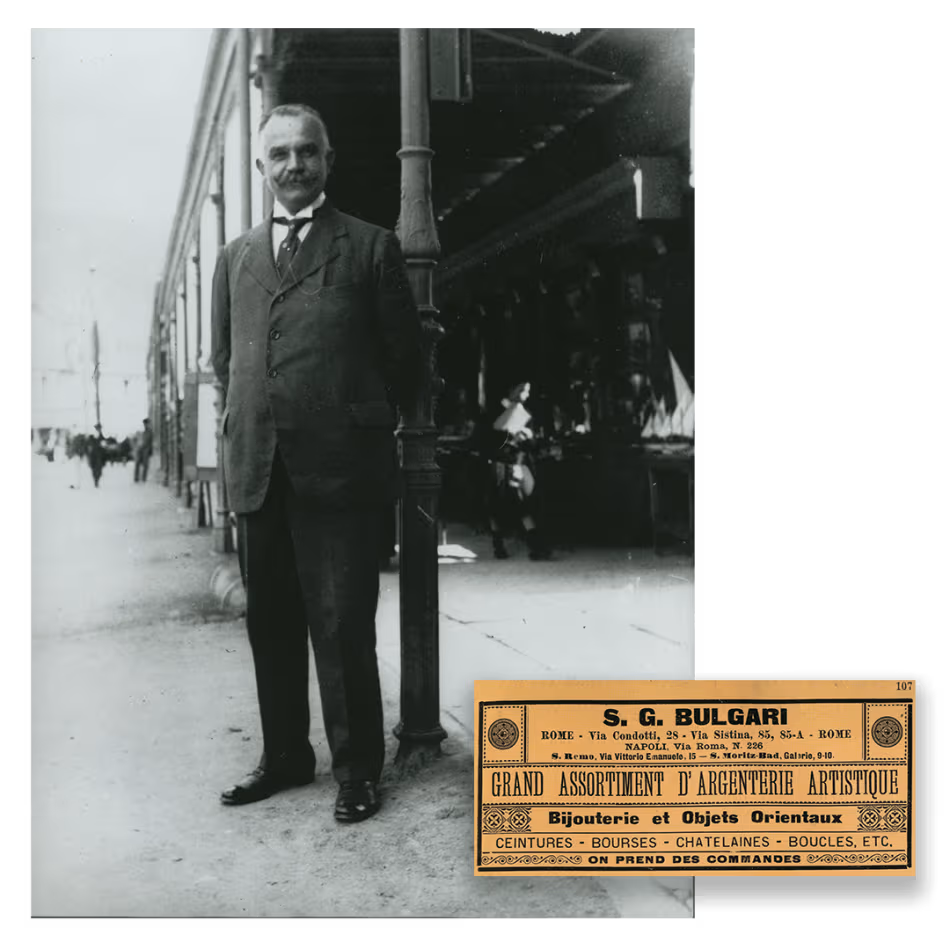
Sotirio Bulgari standing in front of his boutique in St. Moritz. - (Image courtesy of Bvlgari)
The story of Bvlgari begins in 1884 when Sotirio Bvlgari, a talented Greek silversmith, laid the cornerstone of what would become a legendary name in luxury in Rome. At just 27 years old, Sotirio moved from the artistic workshops of Paramythia, Greece, to begin a new chapter in Rome. His boutique on Via Sistina 85 quickly became a hub of refined luxury, showcasing a curated selection of self-made silver ornaments alongside a range of precious artifacts and antiques.
Bvlgari established new rules right from the start: the brand's early years saw a bold embrace of multicultural influences in retail. Sotirio's master plan was to deliver a taste of Rome's grandeur that went beyond ordinary definitions of beauty—and he did just that.
It didn't take long for his extraordinary creations, which blended Mediterranean design elements with exquisitely chosen refined pieces, to become sought after by both Romans and tourists.
Capitalizing on this success, between 1895 and 1897, Sotirio expanded his reach by opening additional boutiques in Italian tourist hotspots such as Sanremo, Naples, Bellagio, and Sorrento. Additionally, during the quiet summer months in Rome, Sotirio strategically expanded his operations to summer resorts, establishing outlets in St. Moritz-Bad and boutiques in Pontresina in Engadine and Lucerne.
1920s: The High Jewelry Dawn
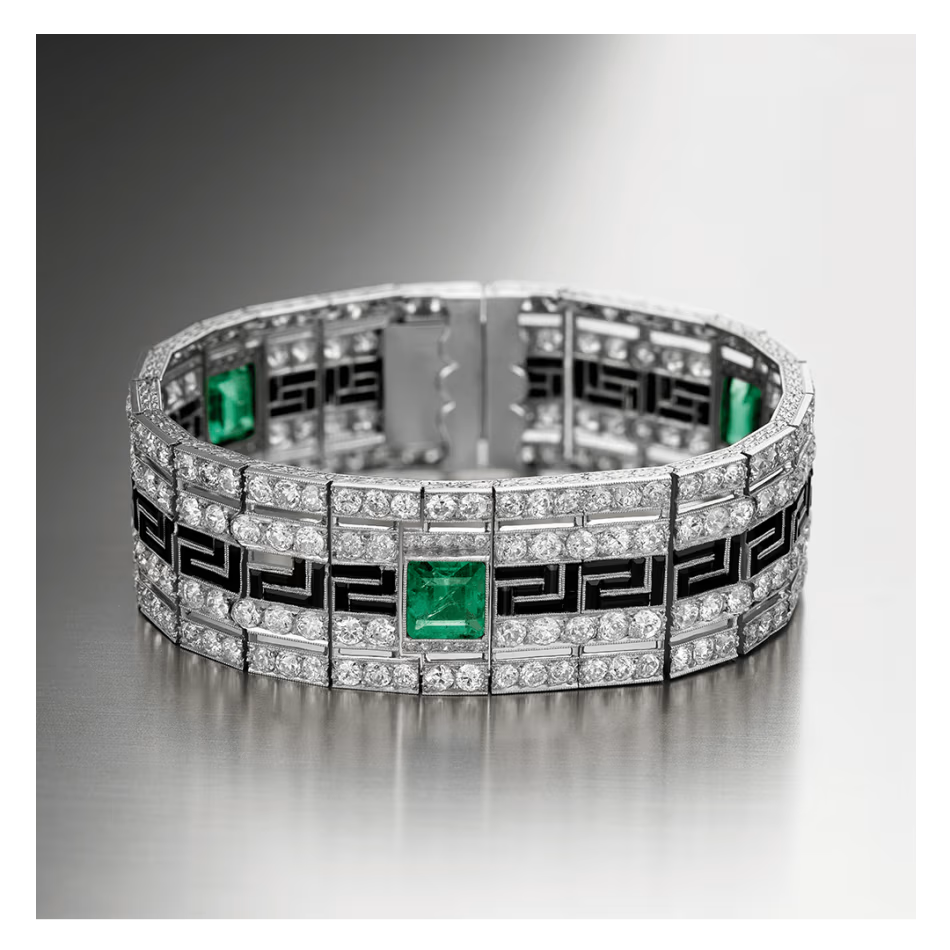 Bracelet, ca. 1925. Photographed by Barrella at Studio Orizzonte Gallery. - (Image courtesy of Bvlgari)
Bracelet, ca. 1925. Photographed by Barrella at Studio Orizzonte Gallery. - (Image courtesy of Bvlgari)
Renowned for its superb quality and use of precious metals, high jewelry became a focal point for Bvlgari during this era. The transition to high jewelry started in the 1900s when Bvlgari opened a larger store at Via dei Condotti 10 in Rome in 1905. This strategic expansion, famously named the 'Old Curiosity Shop' to appeal more to British and American tourists, marked a significant departure from the initial boutique emphasis, steering the brand towards the premium segment of the bijoux market.
His decision was indeed brilliant. Bvlgari ventured into the geometric and stylized designs of the Art Déco movement—a prominent style of the 1920s and '30s known for its sleek geometric or stylized forms—and skillfully integrated these elements with the luxurious appeal of platinum.
The brand’s legendary status today owes much to its alignment with global fashion trends and its use of single-color stones, which echo elements of the traditional French school.
Guided by Giorgio and Costantino, Bvlgari maintained its rich silversmithing tradition while embracing a forward-thinking design philosophy, establishing its coveted jewelry line known for exceptional craftsmanship, innovative designs, and avant-garde aesthetics.
1930s: The Iconic BVLGARI Emerges
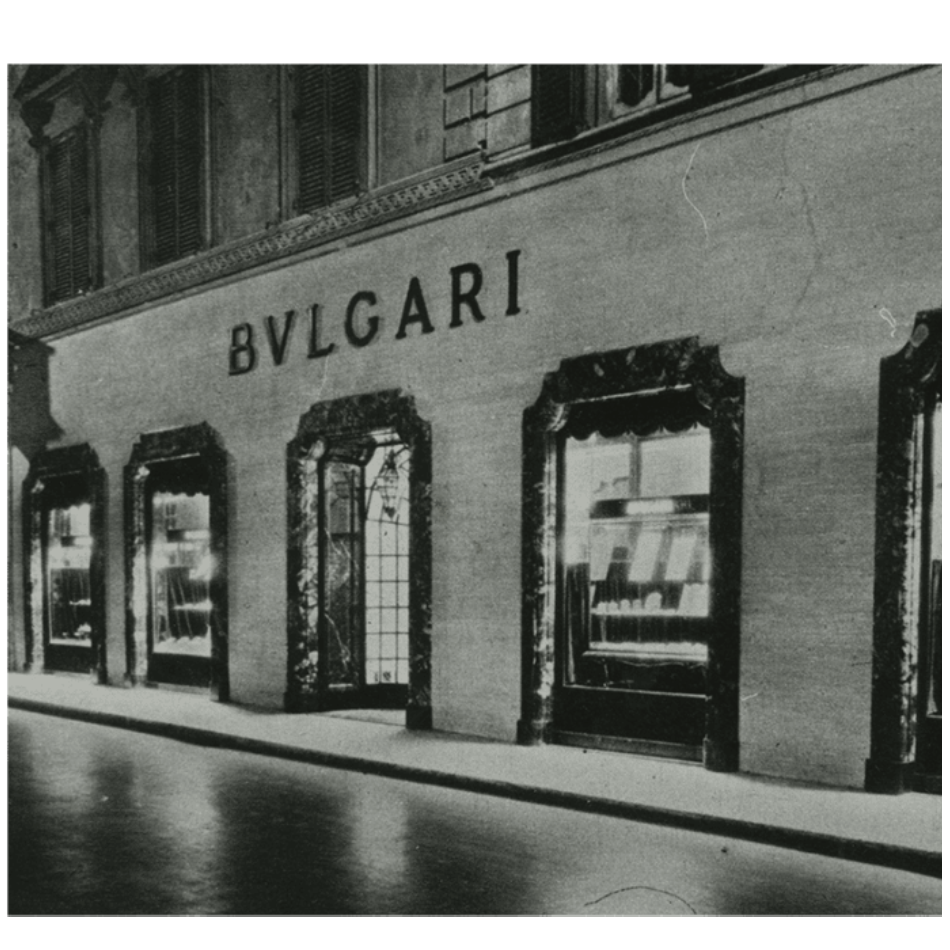
The iconic BVLGARI logo. - (Image courtesy of Bvlgari)
The 1930s were a turning point for Bvlgari, with the passing of Sotirios Voulgaris in 1932 at 75. His vision lived on through his sons, Giorgio (1890-1966) and Constantino (1889-1973), who shared a deep interest in precious stones and jewelry. Under their stewardship, they notably revamped the Via dei Condotti boutique, propelling the brand into a new chapter marked by remarkable success.
This era also saw the debut of the iconic "BVLGARI" logo, with its unique "V" drawn from ancient Roman scripts, forever linking the brand's identity to its Roman heritage.
1940s: The Birth of the Iconic ‘Snake’
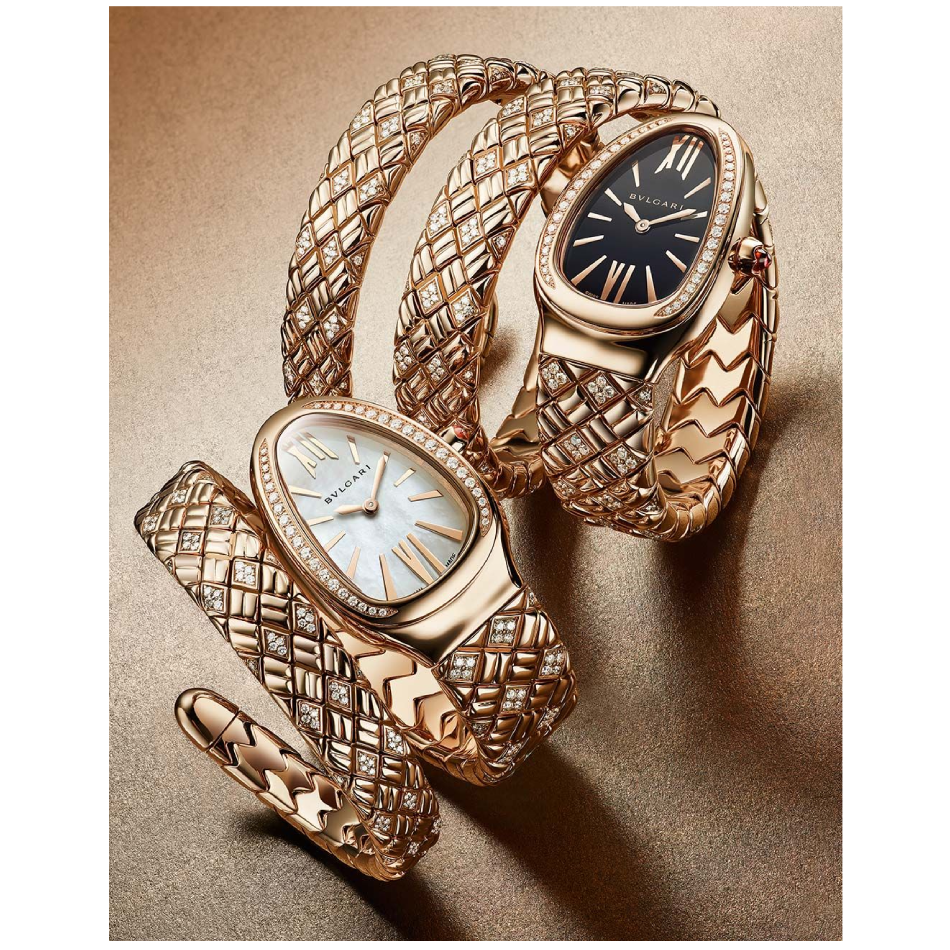
The Bvlgari Serpenti Spiga watches. - (Image courtesy of Ethos Watches)
Despite the challenges of the war era, the 1940s marked a pivotal era for Bvlgari with the introduction of its iconic Serpenti. In 1948, the initial Serpenti bracelet-watches featured a spiraled band crafted using the Tubogas technique, paired with a geometric watch dial. The eccentric snake design became a favorite immediately upon its debut, showcasing Bvlgari’s extraordinary blend of innovative design and artisanal craftsmanship.
The practicality and all-day wearability of the initial Serpenti pieces captured the mood of the era following the global conflict, offering a sought-after fusion of subtle elegance and practicality.
1950s: The Golden Age
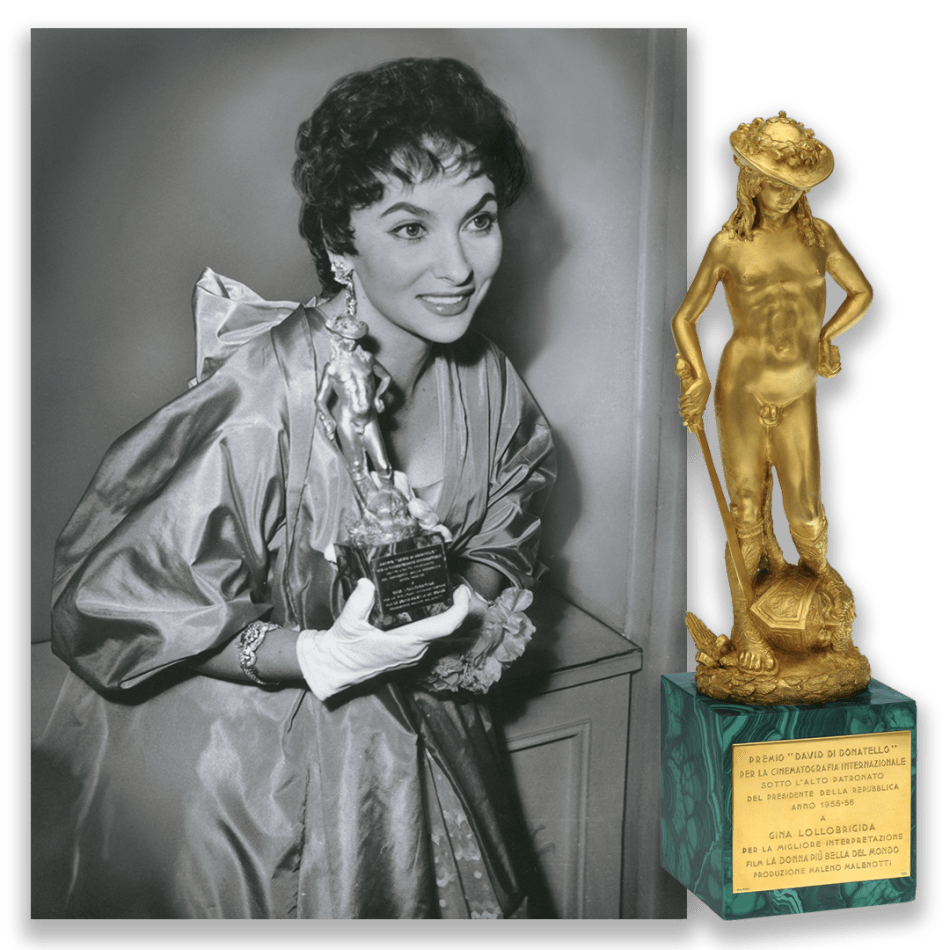
Gina Lollobrigida holding the "David di Donatello" award, 1956. - (Image courtesy of Bvlgari)
The 1950s were a golden age for Bvlgari. Giorgio Bvlgari’s connections with famed personalities like Gina Lollobrigida and Anna Magnani turned the Maison into the go-to destination for Rome’s high society and visiting celebrities.
These esteemed relationships elevated Bvlgari's status and intertwined its identity with the glittering stars of the era, establishing it as a symbol of Italian luxury and a leader in the industry.
1960s: Living La Dolce Vita
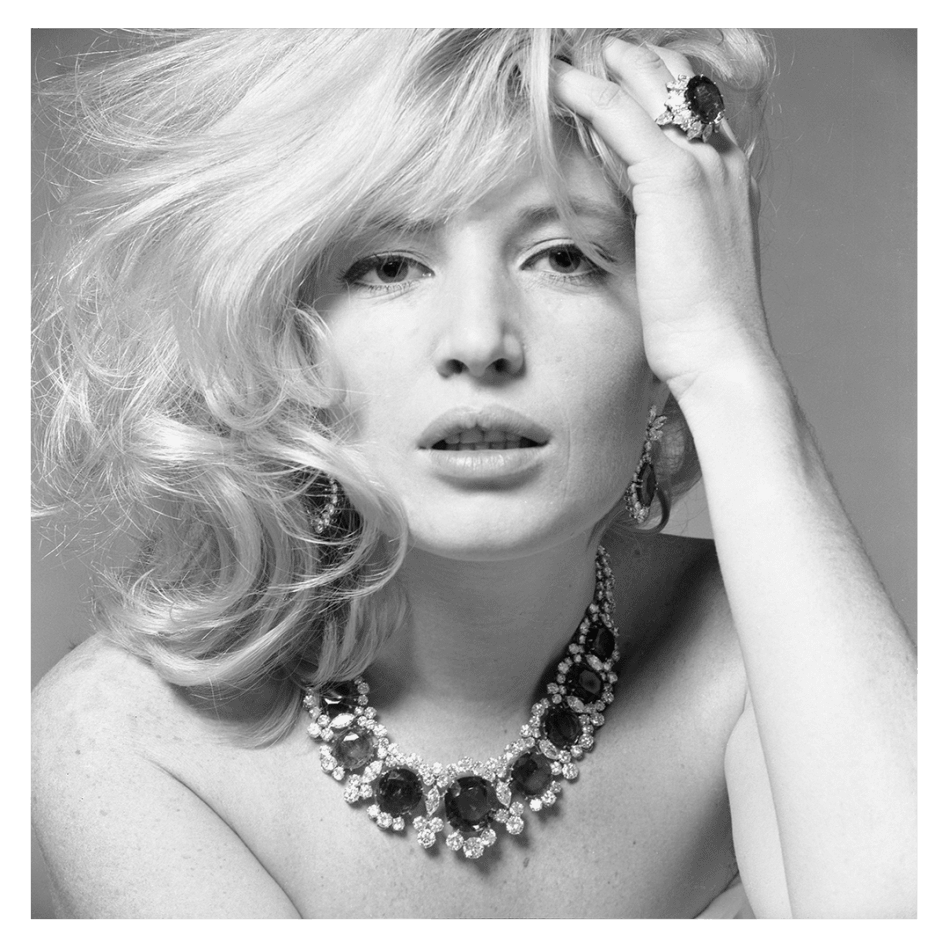
Monica Vitti adorned with emeralds and diamonds parure, 1963. - (Image courtesy of Bvlgari)
The 1960s marked a glamorous evolution for Bvlgari under the stewardship of Gianni, Paolo, and Nicola—the third generation of the Bvlgari family.
At the peak of the Dolce Vita era, Bvlgari's Via Condotti store in Rome turned into a hotspot for international celebrities. Famous icons like Sophia Loren, Ingrid Bergman, Monica Vitti, Elizabeth Taylor, and Anita Ekberg flocked to Bvlgari to revel in its exquisite offerings.
Their patronage not only boosted Bvlgari’s prominence and prestige but also solidified its status as a symbol of the Dolce Vita, an era marked by luxury, lightheartedness, and the joy of living.
1970s: A Design Revolution
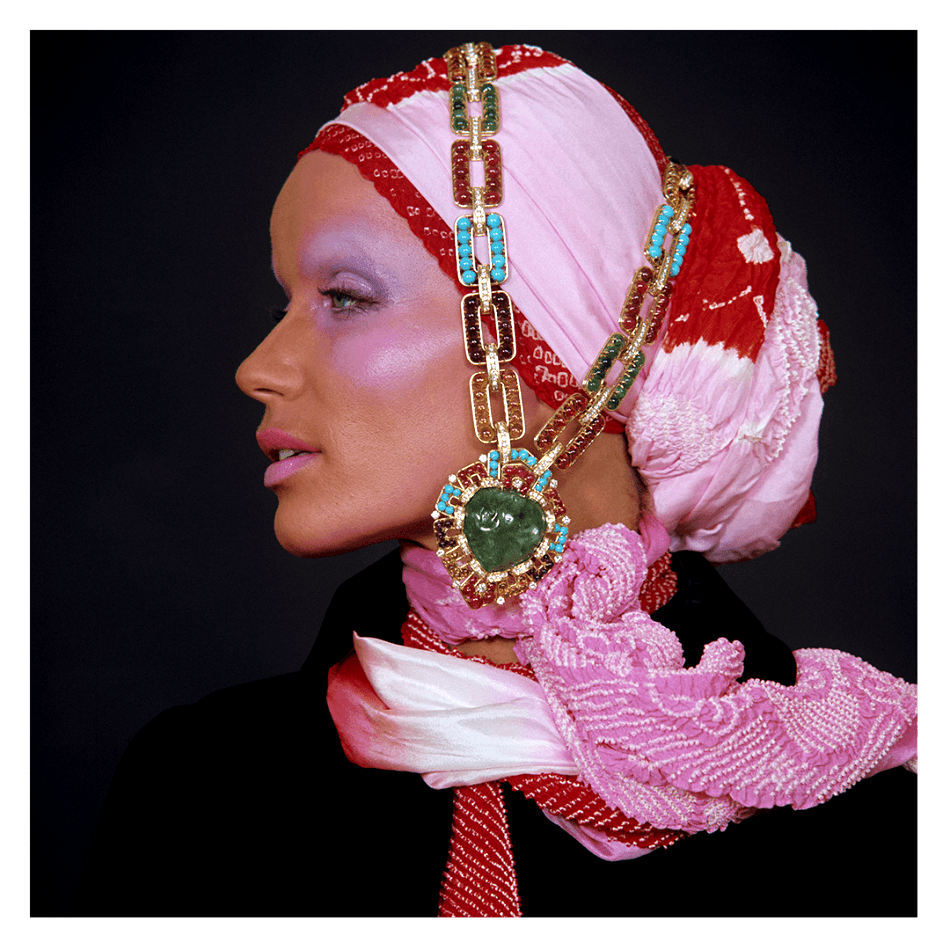
Veruschka Von Lehndorff wearing a convertible sautoir from around 1969. Featured in Vogue US, March 1970. Photographed by Franco Rubartelli. - (Image courtesy of Bvlgari)
Bvlgari saw remarkable global expansion during the 1970s, opening new stores in key locations such as New York, Paris, Geneva, and Monte Carlo. The third generation of the Bvlgari brothers explored a variety of creative influences from the Far East to Pop Art, naturally appealing (to put it mildly) to the preferences of modern women.
One standout innovation from this era of expansion was the Bvlgari Bvlgari watch. Its bold design uniquely incorporated the logo as a central element on the timepiece, marking a first in the world of watchmaking that quickly turned into a sensation.
The bezel of the watch was adorned with a unique double logo inspired by the inscriptions found on ancient Roman coins, and the cylindrical case design was reminiscent of the stately columns of Roman temples.
This fusion of Roman heritage with Italian design and Swiss craftsmanship was tremendously successful back then and set a foundational tone for Bvlgari’s future endeavors in watchmaking.
1980s: The Modular Jewelry Era
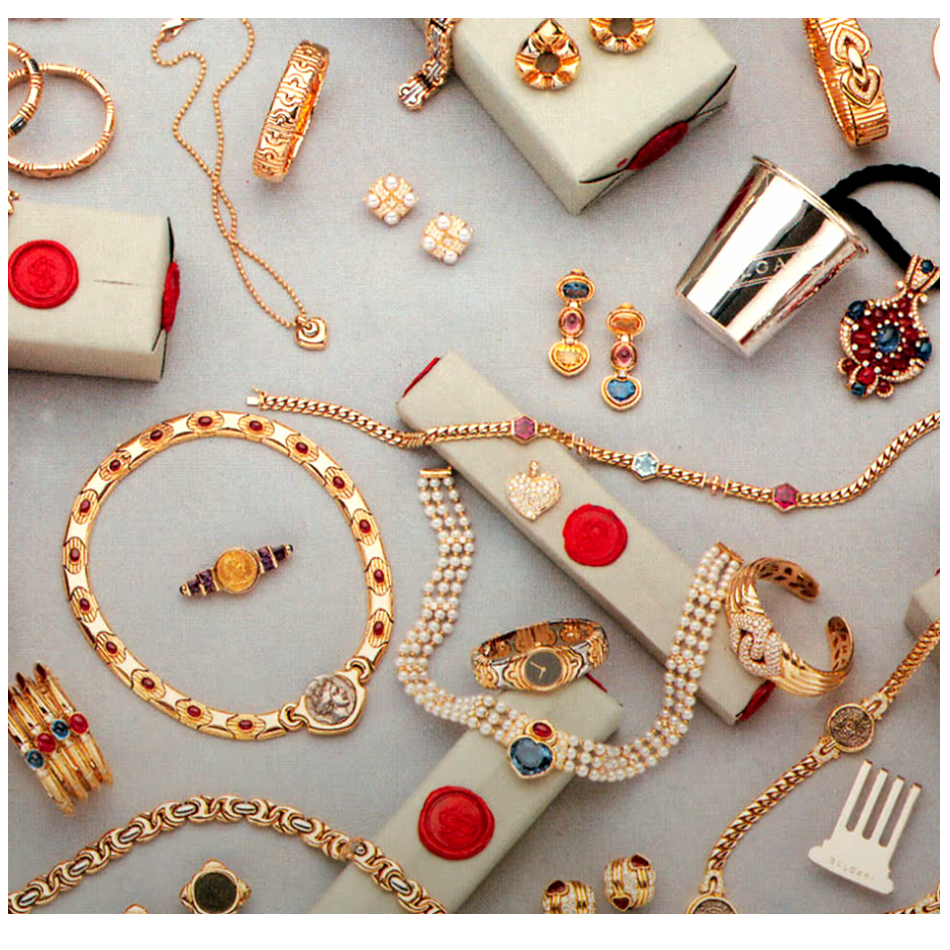
Various types of Bvlgari jewelry. - (Image courtesy of Bvlgari)
Bvlgari continued its path of glamorous success and international expansion, launching new stores across Asia, the United States, and key European locales like Milan, St. Moritz, and London.
In tune with evolving social structures and changing roles of women in society, Bvlgari introduced something equally dynamic: modular jewelry. This inventive approach featured repeating design motifs that could be mixed and matched endlessly.
The range included everything from opulent diamond-studded chokers to more accessible designs blending gold with steel or semi-precious stones. Perfect for the go-getter women of the 80s, these pieces offered both luxury and flexibility to shine at any event, any time of day.
The launch of the Parentesi collection marked Bvlgari's first foray into modular jewelry, featuring a unique parenthesis-shaped metal detail inspired by the sidewalks of Rome. The collection's bold, unisex style laid the groundwork for future modular successes at the Bvlgari house.
1990s: Jewelry, Fragrances, Leather Accessories, and More

Advertising campaign for Bvlgari Contemporary Italian Jewelry, 1996-2004. Featuring B.zero1 rings. By Ogilvy Italia. - (Image courtesy of Bvlgari)
The 1990s were a time of fresh starts for Bvlgari, fueled by a relentless pursuit of creativity in the jewelry industry. The brand adopted a bold attitude, essentially asking, "What more can we do?" and then just doing it.
This period was defined by the blending of unconventional materials to create iconic and highly coveted designs. Notably, the Chandra collection featured white porcelain spheres set against precious and colored stones, creating a strikingly appealing aesthetic. Moreover, the innovative pairing of steel with gold, crafted using the Tubogas technique, highlighted the avant-garde charm of Bvlgari's creations, solidifying its status as a pioneer in the jewelry world.
And just when you thought Bvlgari couldn't diversify any further, the 1990s brought yet another wave of innovation. The brand expanded into silk and leather accessories, demonstrating its unwavering commitment to excellence and strict adherence to its creative ethos.
What more could luxury seekers desire from Bvlgari? Perfumes, naturally, and the brand delivered. The Maison ventured into a new sensory experience with the introduction of its first fragrance, Bvlgari Eau Parfumée au Thé Vert, marking the first time green tea had been the central note in a perfume.
The momentum of the 1990s culminated in the 1999 launch of the iconic B.zero1 ring, and it's safe to say a true legend was born. Designed to mark the new millennium, the B.zero1 beautifully captures a rich historical legacy, the boldness of modern design, and the uncharted possibilities that lie ahead.
Contemporary Italian design shines through B.zero1's boundary-pushing approach, with its industrial-inspired spiraled core symbolizing Bvlgari's bold vision and fearless approach—unsurprisingly becoming an all-time bestseller.
2000s: A Leap into Hospitality

Bvlgari Resort in Bali. - (Image courtesy of Indagare)
With the arrival of the new millennium, Bvlgari expanded its empire into the world of hospitality, starting with a sophisticated hotel in Milan in 2004. This expansion continued with the inauguration of a stunning resort in Bali in 2006, uniquely positioned more than 150 meters above the Indian Ocean's shores.
During this decade of creative explosion, Bvlgari unveiled the Lvcea jewelry collection in 2001—a dramatic departure in design that fused geometric shapes in white gold and platinum with the luminous beauty of pearls and the sparkle of diamonds.
Beyond jewelry, the Lvcea watches meld quintessential Italian craftsmanship with intricate mechanics, resulting in stunningly beautiful and elegant timepieces that go far beyond being just "must-haves."
Bvlgari kept refreshing the air with luxurious scents, rolling out standout fragrance collections such as Omnia and Bvlgari Pour Homme, each exuding the unmistakable luxury aroma you'd expect from a high-end luxury brand.
2010s: Bvlgari's Octagonal Marvel

Meta CEO Mark Zuckerberg wearing the Bvlgari Octo Finissimo Ultra COSC, the world's slimmest mechanical watch with a thickness of only 1.7mm. - (Image courtesy of @kamalwatchco via Instagram)
The 2010s brought a new chapter for Bvlgari, characterized by the construction of the modern Maison and initiated by the release of the Octo watch in 2012. This design marvel shattered traditional watchmaking norms with its unique octagonal shape, which merged the square and the circle, offering a modern tribute to Bvlgari’s Roman heritage and mirroring the architectural beauty of ancient Rome.
Within less than ten years, the Octo Finissimo quickly became a symbol of modern fine watchmaking and a hallmark of Italian luxury. Deservedly legendary in the world of haute horlogerie, this luxurious timepiece is coveted for its unique octagonal shape and timeless modern appeal.
2020s: Crafting Next-Gen Luxury
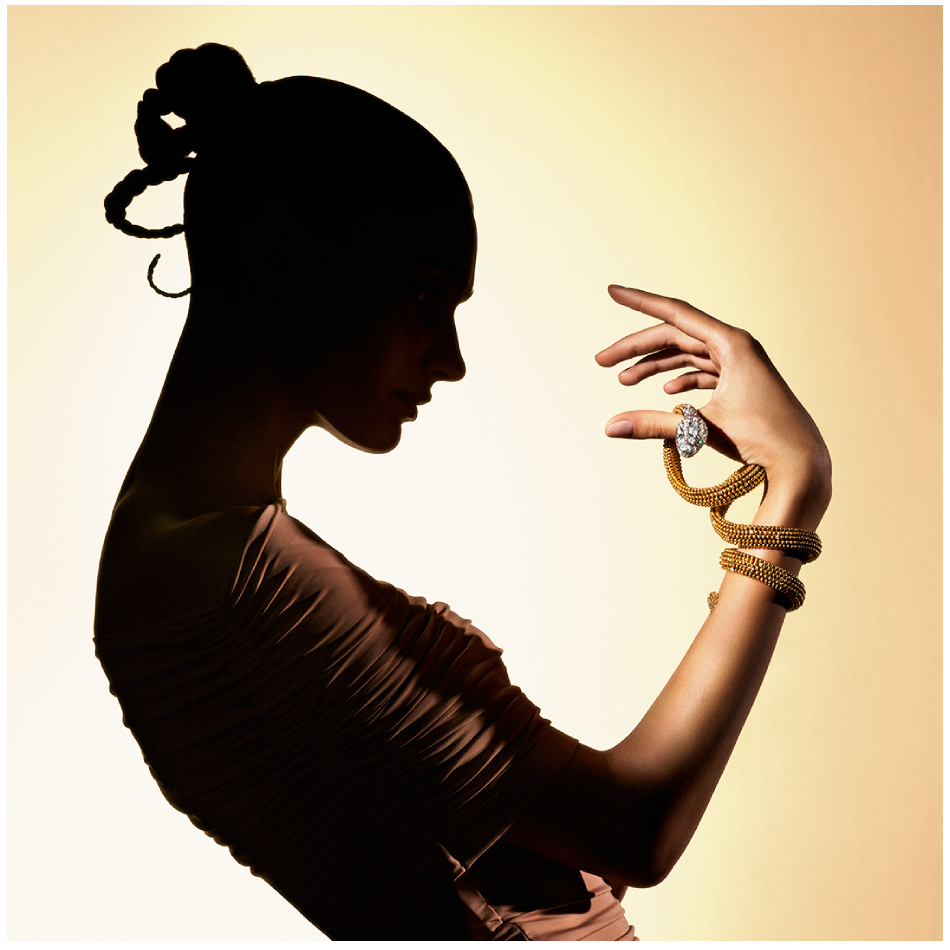
Bvlgari’s Serpenti celebrates Its 75th Anniversary. - (Image courtesy of Harper's Bazaar)
Over the past few years, Bvlgari has achieved tremendous global acclaim and continues to set its sights on the future, aiming to meet and exceed the expectations of a prestigious luxury house like theirs.
In a notable highlight of 2021, Bvlgari served as the "Platinum Sponsor" for the Italy Pavilion at the Dubai 2020 Expo, enriching the event with an exhibition titled "The Art of Craft" that showcases the excellence of Made in Italy. The same year also marked the opening of another Bvlgari Hotel, this time on Paris's esteemed Avenue George V.
In 2023, Bvlgari's legendary Serpenti collection celebrated its 75th anniversary with grand festivities around the globe. The iconic line has consistently featured in the wardrobes of well-known figures, beautifully encapsulating the qualities of serpents as symbols of vitality and upholding Bvlgari’s strong brand values to this day.
A-Listers Choose Bvlgari—Tempted to Try?
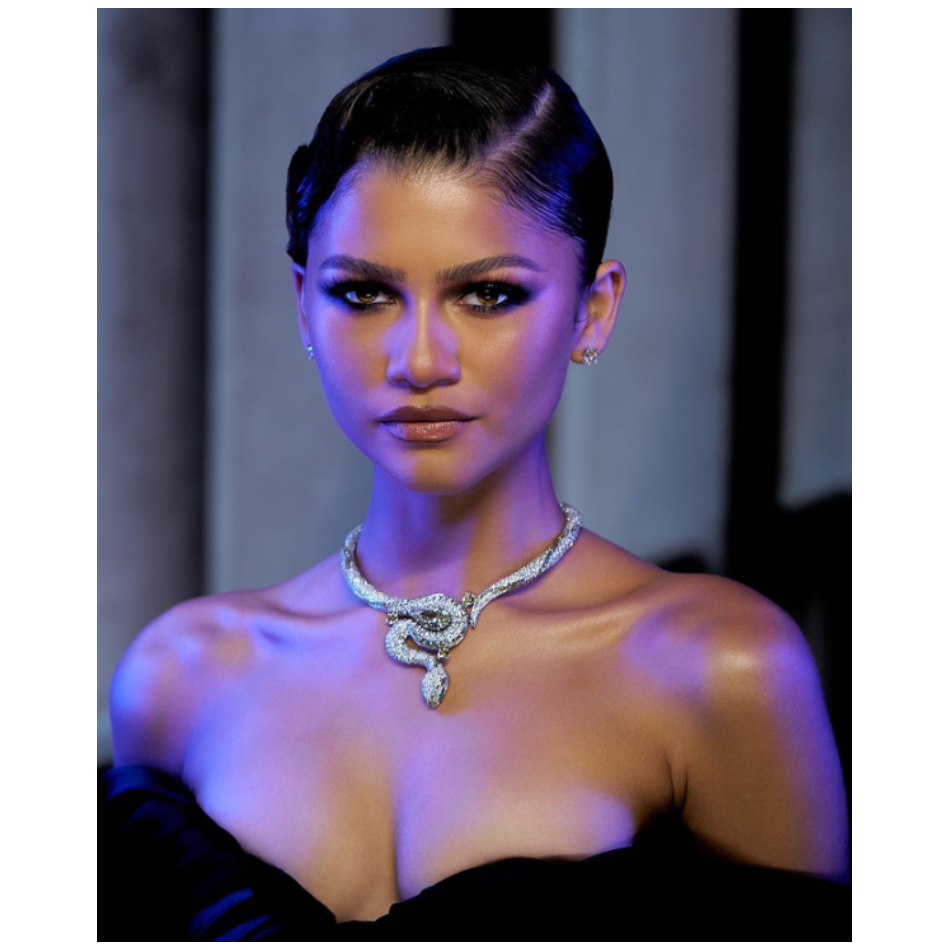
Zendaya dazzles in the Yellow Diamond Hypnosis Serpenti necklace, a standout piece from the Bvlgari Mediterranea High Jewelry collection. - (Image courtesy of @zendaya via Instagram)
Since its 19th-century origins, Bvlgari's illustrious history and dedication to excellence have understandably made it a favorite among global celebrities. From the stars of old Hollywood glamour like Elizabeth Taylor and Audrey Hepburn to modern icons like Zendaya, Anne Hathaway, Catherine Zeta-Jones, Ziyi Zhang, and Sharon Stone, many continue to choose the Italian luxury fashion house's exquisite offerings.
For those who appreciate the commitment to excellence and innovative designs of Bvlgari but are deterred by the high price tags, starting your luxury collection might be more affordable than you think.
Second-hand luxury items have become a popular choice not only for budget-conscious enthusiasts but also for those on the hunt for rare, discounted treasures at a fraction of the original cost (It's official: Thrift shopping has lost its stigma A-listers like Janelle Monáe, SZA, Helen Mirren, Macklemore, and Sarah Jessica Parker are all obsessed with thrifting and second-hand style!)
Searching for a reliable luxury shopping spot? ZenLuxe is a luxury-exclusive platform where you can conveniently find a variety of pre-loved Bvlgari pieces without breaking the bank. Fill your cart with genuine Bvlgari treasures (and other luxury brands, too!), and soon, you'll be indulging in luxurious originals for less, yet still offering that same rush of excitement!
About The Writer
Meet Mariam - a fashion writer who lives and breathes all things vogue and glamour. For her, the most therapeutic aspect of fashion goes beyond simply shopping for the latest styles that appear in stores—it’s fully experiencing this glamorous world from the little details to the big moments (there's nothing quite like the thrill of flipping through a sleek fashion magazine, is there?).

